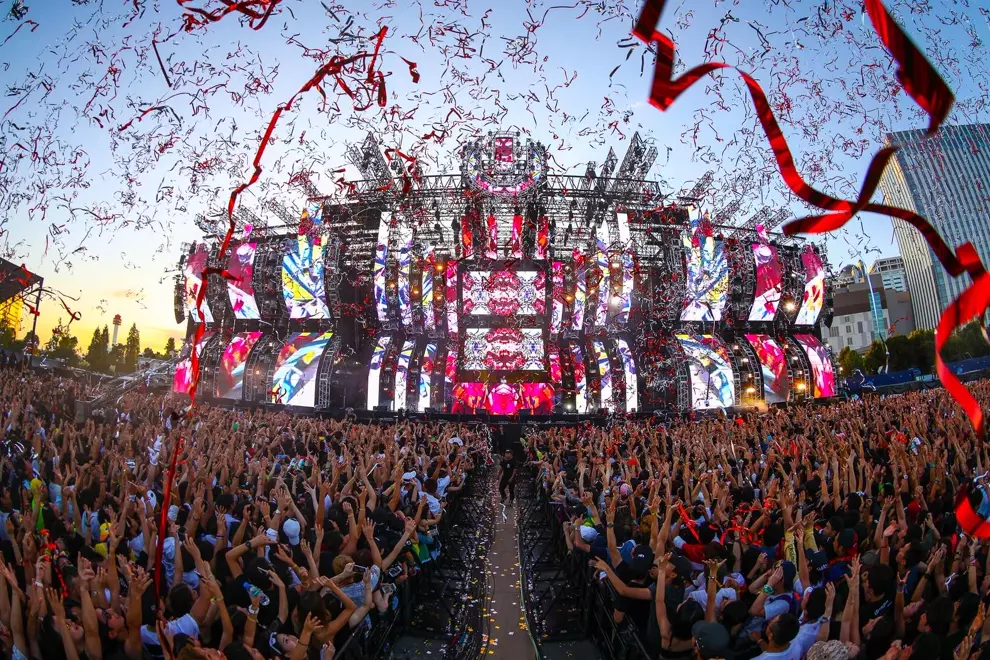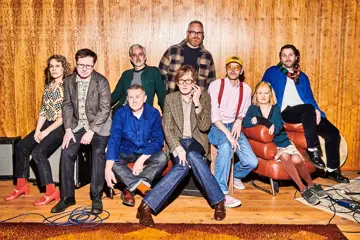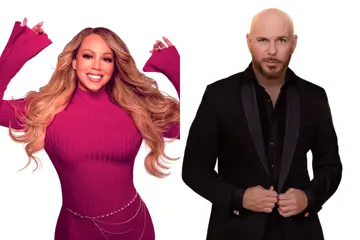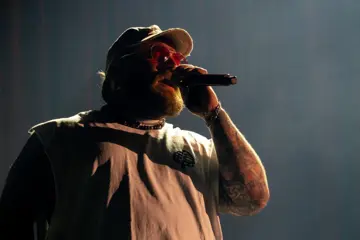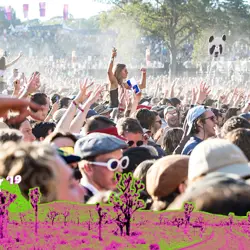 Splendour In The Grass
Splendour In The Grass"I know quite a few girls and women now who are called Meredith after the festival, and parents have written to say they've had a baby called Goldie, named after Golden Plains.
"Tattoos, heaps of tattoos, asking to get married there. People asking to get buried there or have their ashes buried there, or have a memorial there."
This was a quote from a promoter in Creative Australia’s inaugural Soundcheck: Insights Into Australia’s Music Festival Sector, a landmark look at 51 of the 535 events staged during the 2022-23 financial year.
People get as emotional about festivals as they do their sports teams, as evident in the responses to its release last week.
Among data unearthed was that escalating costs pushed the staging of a festival to an average $3.9 million. This resulted in 35 per cent losing money with a median deficit of $470,000.
This uncertainty was not helped by attendance by the 18—25 age group now 27 per cent compared to 41 per cent before COVID.
"We are absolutely in the thick of a real crisis, we're not acutely aware of what's going on," Music Australia Director Millie Millgate stressed in a webinar launching the study.
There were calls for governments and their digital chequebooks to step in to help until the current crisis passes.
Last week, Tasmania’s Party In The Paddock, which attracts 10,000, confirmed it will return in 2025 but it needed financial help to continue.
“It’s the most important time in our history, after running this event as a locally owned and operated business for the last 12 years, that we receive more support from the state government,” said Vibestown director Jesse Higgs.
CALLS AGAINST
But others insisted that government funding should not be used to prop up commercial events, and that promoters have to take responsibility for not adapting to changing fan behaviour and continuing to use a broken business model.
They argued arts funding should primarily go to grassroots building blocks like small music venues and community festivals which launch and build up new acts and initiatives.
“I don’t think it should go to festivals,” Regurgitator manager Paul Curtis told TheMusic.com.au. “Festivals pose themselves as the epicentre of the music industry when actually they’re just a satellite industry that feeds off everything.”
Added Oztix ticketing agency co-founder Brian Chladil, “It’s absurd to think that these large events, that have made profits for years, need propping up with Australian peoples’ tax dollars.
“Besides, aren’t promoters are in the business of risk? Shouldn’t they take the good with the bad?”
BARRIERS
Lack of funding and grants was considered the second largest barrier to running music festivals in Australia, at 39 per cent, said Soundcheck.
Rising operational costs were the biggest barrier, at 47 per cent.
At third spot was insurance (31 per cent) – one promoter reported post-COVID insurance excesses went from $5,000 to $250,000 – and extreme weather events (22 per cent).
On the weekend, Victoria announced a $10 million package that included grants of up to $50,000 for its festivals and $10,000 for venues towards paying artists fees.
The state’s Minister for Creative Industries, Colin Brooks, said: “During a period of change for Australia’s live music industry, we are backing Victorian festivals and venues through these new programs – supporting the businesses that are the backbone of Australia’s live music heartland.”
According to Soundcheck, the bulk (40 per cent) of festival funding, comes from state and territory governments. The Commonwealth and local governments chomp up about 21 per cent each.
Business or private agencies contribute 10 per cent, while private and business donations in kind make up 7 per cent.
Said the report, “Almost two-thirds of music festivals received financial sponsorships (63 per cent), making this the most common form of financing, while less than one third received in-kind sponsorships (29 per cent).
“One in ten received financial donations (10 per cent) and less than one in ten received in-kind donations (7 per cent).
Based on an online sample of 51 festivals, the average amount of donations and/or sponsorships per music festival was $176,707.
The amount of donations and sponsorships across the 34 festivals that received this form of income totalled $4.8 million.
ECONOMIC REASONS
Bluesfest’s Peter Noble earlier told TheMusic.com.au that governments are obliged to step in and save festivals even if purely on economic reasons for job protection, contribution to regional economies, and injection to tourism.
Bluesfest for example, employed up to 2,000 this year (not including 500 volunteers) and in 2022 contributed an estimated $70.2 million to Byron Shire’s economy, $143.9 million to the Northern Rivers’, $232.3 million to NSW’s and $272.3 million to Australia’s.
North Byron Parklands, site of Splendour and Falls (both a no-show in 2024), previously estimated that the two tribal gatherings injected $100 million into the Australian economy, and $25 million into Byron Shire’s.
Boosting regional economies were now-in-voluntary-administration Castlemaine State Fair ($3.52 million) and the six-state Groovin’ The Moo (estimated $20 million). Woodford Folk generated $17.1 million to the Moreton Bay Region, and a further $12.3 million to other parts of Queensland.
The now-defunct Mona Foma brought $46 million to Launceston in 2019, Darwin’s BASSINTHEGRASS injects $14.5 million, and Adelaide Fringe $50.1 million.
To be investigated further by Creative Australia is why Splendour and Groovin’ The Moo pulled the plug after slow early sales and social media criticism of their headliners, while genre events as dance music’s Ultra Australia and hard rock’s Knotfest attributed their bills for strong sales.
Last week’s Ultra Australia played sell-outs on the Gold Coast and Melbourne with Zedd, Steve Aoki and Armin van Buuren. It had its biggest year, promoter Travis Grech said.
He accredited the continued success of Ultra, which debuted in 2019 with a draw of 40,000, to “high-profile line-ups” and total confidence in the Ultra brand where “patrons know what they can expect from an Ultra production.”
A Soundcheck takeaway was that electronic dance music (EDM) festivals are the most popular (23 per cent) followed by rock (21 per cent), country (19 per cent), indie (17 per cent), folk (13 per cent), alternative (10 per cent), hip hop (9 per cent), blues (8 per cent), pop (7 per cent), and metal (5 per cent).
Soundcheck revealed: “Electronic music festivals are far more likely to be held in major cities (77 per cent compared to 16 per cent held in inner regional Australia and 7 per cent held in outer regional/remote/very remote Australia).
“Similarly, metal music festivals are more likely to be held in major cities (76 per cent), as are rock (46 per cent).
“Country music festivals are far more likely to be held in regional areas (83 per cent compared to 11 per cent held in major cities and 6 per cent held in remote Australia).
“Blues festivals (69 per cent held in regional areas) and folk festivals (75 per cent held in regional areas) are also more likely to be held in regional areas.
“First Nations music as a genre is split across the musical genres as First Nations artists play, and First Nations music is presented, at many different types of music festivals.”
The next 12 to 24 months will be interesting to see how promoters respond to Creative Australia’s findings.
It also remains to be seen how government funding will change, whether in terms of straight festival funding, or export and touring grants.
Creative Australia’s Head of Strategic Development, Georgie McClean, said, “Until now, the size, scale and impact of the industry has not been well documented or understood.
“We hope this report will serve as a useful tool for festival organisers and help us to better understand the role and contribution of festivals within the broader creative industries as they face multiple challenges.”
BACKLASH
On the day of Splendour’s cancellation (March 27) the Greens fired off a letter to the Government that read in part “We need urgent funding to support festivals and the arts through the cost-of-living crisis” and to use the May budget to address this.
Greens arts spokesperson Sarah Hanson-Young also planned to invite festival reps to have a say at the next hearing of the Senate inquiry into the National Cultural Policy which she chaired.
Regurgitator manager Paul Curtis was so “stunned… and disappointed” that he wrote an open letter to the Greens.
He asked why it was going to bat for a festival which is majority-owned by “a multi-billion dollar overseas concern”.
Curtis told TheMusic.com.au, “It was disappointing because they were making a gut reaction, ‘Oh we have to save the music industry’ without fully understanding the full issue at hand.”
He has an issue with large scale rural events which draw tens of thousands, “essentially pop-up cities putting pressure on transportation, accommodation and utilities. You need infrastructure to deal with the mass movement of a transient population, and subject to the impact of climate change and environmental decline.”
Regurgitator and Curtis are still part of the DIY (do it yourself) movement they hailed from, where one creatively sources funding for non-commercial projects. Approaching arts bodies, he said, was never an option because of the bureaucratic controls and expectations involved.
“Many many years ago, I was asked to be in (a music association)’s funding committee for quick turn-around. But it seemed an exercise in box ticking for projects that looked good and had commercial potential. My argument was why are you giving money to something that has commercial potential because it has more capability to source money from elsewhere.”
There’s greater capability today for DIY results “if you have a computer and access to the internet”, Curtis noted. “The capacity for DIY is so enhanced that it blows me away as to what the DIY scenes in the ‘70s and ‘90s could have achieved!”
For Curtis, taxpayer money should focus on grassroots venues, community initiatives and musician creativity which, when given the opportunity create “excellent and diverse results.” The aim, he stressed, was to always foster Australian culture. ”These multi-national entities are the modern colonisers of culture.”
Oztix co-founder Brian Chladil’s concern is that “post-COVID government funding backed a bunch of events that wouldn’t have happened if the funding wasn’t available”.
“That’s a great thing when the events are pushing the creative boundaries of music and art; but governments were funding things that were essentially always going to unviable or uncommercial.”
It has led to a situation, he said, where previously commercially successful events now had to compete against promoters with subsidies.
“This blanket funding actually distorts the market. The more promoters with money to burn means prices for everything goes up: production, freight, crew and suppliers all charge more because of demand, but especially artists.
“It actually works against a sustainable live music market. If a band is getting paid inflated rates, how is that good for their long term career? It’s then very hard to go back to earning half the amount you were getting paid when the market settles down again.”
Chladil’s suggestions are that before the next round of funding, “a panel of the industry experts be assembled with equal representation. Companies earning over $X amount could be disqualified from applying.”
Funding should be ear marked for the support and protection of workers, suppliers, bands and crews who lose out every time there is a cancellation.
“The news is all doom and gloom about festivals but could it be these events are failing because they made the sponsor brands become more important than the music and the patron experience? Or did the smoke, fires, floods, mud and overcrowding turn people away? Or is it just poor programming?
“Interestingly Big Day Out, Soundwave, Future, Stereosonic and more all collapsed 9—10 years ago, all for different reasons though. Which is probably true of what’s happening now. So is this just a cycle we are going through?”

